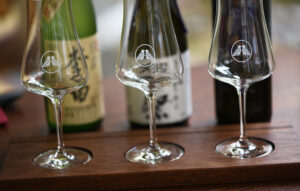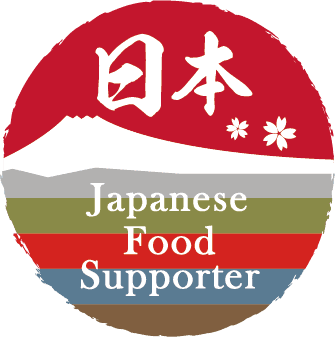How exactly the sequences of courses, the individual dishes and dishes of the kaiseki have developed historically is not clear. Much research is being done on this topic, and much more is being discussed on the subject of restaurant kaiseki.
Does that even exist, kaiseki in the context of a normal restaurant business? The idea of kaiseki seems to contradict this at first. Nevertheless, in Japan as abroad, more and more restaurants are offering kaiseki in addition to "normal" dishes. That should not be the topic here. What exactly is the sequence of courses in Kaiseki, why is it so, and what distinguishes Kaiseki from Cha-Kaiseki? Let's start at the beginning.
Probably developed from the Cha-Kaiseki
The different spellings of the word Kaiseki already suggest that there is ultimately not just one singular truth about kaiseki. If one looks at the gait sequences, which change seasonally and vary in the different regions of Japan, the visible diversity supports the idea. So there is not only one general and unique kaiseki. But there are thoughts, handed down structures and traditions behind the kaiseki, and many of these structures can already be found in the probably older cha-kaiseki.
Pleasure and entertainment
The essence of these meals, originally rather simple with few ingredients but prepared with all the more care, was to enjoy the moment in peace and the company of like-minded people. The focus was therefore on the moment of rest. No ornamentation, no sumptuous meal, no conspicuously decorated tableware should distract. Kaiseki is simplicity, simplicity. It is precisely this simplicity of seasonally available food in the immediate vicinity that can be felt in every single course to this day. This is at least the case when the cook has understood kaiseki.
To show a food at its best, you do not need a lot of ingredients, nor elaborately prepared sauces or spices. In most cases, a simple but professional treatment of the food and the combination with one or at most two other Ingredients.
These ingredients are chosen in such a way that they make it possible to experience the respective characteristics of the food in all their complexity. In addition to taste, visual and tactile impressions play an important role. Mind you: It is still about the one dish, not about tableware, spatial impression, decoration of the plate or the like.
Differences become clear in comparison
Kaiseki, strictly speaking, is a homonym used for both cha-kaiseki and kaiseki proper. In addition, there are historical references to practices among ascetic monks that suggest another, quite different meaning of the word kaiseki. What we know today as kaiseki is heavily influenced by Honzen-ryōri 本膳料理, the courtly cuisine of the Muromachi period 室町時代.
Names for dishes from the Cha-Kaiseki have also been incorporated. Some dishes in the Kaiseki are older than the Cha-Kaiseki and do not appear in it. This is because Kaiseki, despite all its reduction, is more focused on entertainment and pleasure than Cha-Kaiseki.
Cha-Kaiseki is served as part of a tea ceremony and conveys harmony, respect and simplicity. The simplicity falls away at the moment when entertainment through food and drink becomes the focus of the kaiseki, replacing the contemplative tranquility of the tea ceremony.
Structure of the Cha-Kaiseki
The individual courses of Cha-Kaiseki follow a set order. They are served one after the other, not simultaneously. And the order is fixed. Nevertheless, the exact ingredients are variable. With each individual course, it becomes clear what is seasonal and available in the respective region.
1. oshiki 折敷: rice, soup and mukōzuke 向付 or 向附.
Oshiki or Orishiki originally means something that is folded and presented, the term is composed of oru 折る (fold) and shiku 敷く (present). The origin of this term is in the way of presenting meals. In the past, people folded the leaves of plants and placed them under the food. This evolved into platters and trays made from the wood of cedar or cypress, showing the natural grain of the wood.
In this first course, the rice is placed on the left side and the soup occupies the right side. Mukōzuke, or sashimi or namasu, eaten without soy sauce, is on the other side of the oshiki, opposite the guest.
2. nimono-wan 煮物椀: forged
Strained dishes are served in large, very deep bowls. Few strained ingredients find their place on the bottom of the bowl, and a clear broth is poured over it for serving. This course is also called wan-mori 椀盛り.
3. yaki mono 焼物椀: Grilled
A grilled dish forms the third course of the Cha-Kaiseki. And with this, a caesura takes place, because these first three courses are summarized as "One soup, three vegetables". The three vegetables stand for Mukōzuke, the simmered ingredients and the grilled, which of course does not have to be of animal origin.
4. shii-zakana 強肴, susume-zakana 進肴: fried dishes.
This course is served only when a boost is desired. Fried fish is the dish of choice here.
5. hashi arai 箸洗い or kosuimono 子吸い物: Clear broth with a light taste.
This broth is somewhat reminiscent of warm water, but in fact there is quite a subtle taste. In the broth float small amounts of garnish.
6. hassun 八寸: Three or more dishes of meat, fish or vegetables.
Hassun is basically served by the host, teishu 帝主, and accompanied by sake 酒.
This course is applied only after all other courses are finished and the bowls and plates are emptied. The strange name of this course comes from an old unit of measurement in Japan. A Sun 寸 measures 3.03 centimeters, and the measurement was used until the Meiji period (18868-1912). This course is called hassun (eight = hachi 八, here shortened to "has" because of the following "sun"), literally 8 x 3.03 centimeters. The name refers to a tray made of cedar, which has an edge length of roughly 24 centimeters. It is surrounded by a narrow, slightly raised rim. Rules specify exactly how food should be served on this hassun.
7. kō-no-mono 香の物 and yutō 湯桶: Japanese pickles and koge-yu 焦げ湯
The two dishes are used to clean the plates that guests have used. The host is thus shown gratitude and respect. Kō-no-mono is a sour pickled vegetable (usually soured with vinegar) typical of Japanese cuisine. Koge-yu is the name for the rice left at the bottom of the traditional rice stove. This rice is caramelized to a golden color by direct contact with the heat and is lightly salted and boiling water is poured over it. Yutō is the name of the pot in which koge-yu is served. So in this case, the pot gives the name to the dish.
8. matcha 抹茶 and wagashi/o-kashi 和菓子/お菓子
This is the main course, the actual tea ceremony. After Koicha 濃茶, the thick tea, Japanese sweets (Wagashi) and Usucha 薄茶, a thin tea, are served. Usucha is the frothed, light green matcha now known in the West. Koicha is about twice as concentrated, and the color is much more intense. Wagashi is the name for Japanese-style sweets, in contrast to Western-style sweets. Chocolate, wine gums, candies, and chocolates are called Yōgashi 洋菓子 (Western sweets). Wagashi are made in their dry version from pressed powdered sugar, color, and possibly a subtle flavoring. In a second, somewhat less "dusty" category, wagashi are made from beans and sugar. Rice flour may also be used. The fine sweetness of the wagashi forms a counterpoint to the tea, in contrast the respective own flavors of the sweets and the tea are strengthened.
Characteristic: One plate for all
With the exception of the first, second and fifth courses, each course is served on a single platter from which all guests take. Etiquette dictates that a guest takes his or her dish from the platter and then passes the platter to the next guest, who can enjoy both the dish and the presentation of it. But what does a kaiseki look like in comparison?
Kaiseki: structure and gait sequence
The structure of the kaiseki and the courses are indeed fixed. But there is definitely a bit of variance. For example, alternative names are possible, and additional courses can be served. Exactly how the kaiseki is structured depends on what foods are available locally and seasonally. The chef's personal preferences, his training, current occasions and much more play a role. So in kaiseki, the courses as a whole are not fixed, only the structure as such is fixed. For some courses, the method of preparation is fixed, for others, what the dish has to harmonize with.
1. sakizuke 先付 (also Zensai 前菜 Hashi-wari)箸割)
A dish served, accompanied by sake, at the entrance of the meal.
optional: Mae-Hassun 前八寸. A dish served during the first half of the course. Mae 前 means "before", specifying that this course is served before the actual hassun.
optional: Oshinogi お凌ぎ. A small dish to satisfy hunger a little. May consist of one or two pieces of sushi or a small amount of soba.
2. wan-mori 椀盛 (also called shiru-mono 汁物 or sakisui 先吸い).
In the simplest version, it's dashi 出汁 topped with soy sauce and a little salt, with a wan-dane 椀種 such as seafood or chicken. Tsuma つま enhances the flavor of the wan-dane and adds some color to the dish, and a sui-kuchi 吸い 口 floats on top of the soup as a seasoning ingredient.
3. mukōzuke 向付 (alternatively sashimi 刺身, tsukuri 作り or katsu-sen 活鮮).
Mukōzuke is known as part of the first course in Cha-Kaiseki. Here, it is served independently as a single course. The term "Mukōzuke" means nothing more than "something placed on the other side of rice and soup".
optional: Oshinogi お凌ぎ. The same as above, then it will be served alternatively at this point. The option here is to be understood as an either-or, the course does not occur twice in the Kaiseki.
4. yakimono 焼物 (alternatively dai-no-mono 台の物 or yaki-hassun 焼八寸).
A grilled dish. While yakimono simply means anything from the grill, dai-no-mono usually refers to seasonal food. Please do not confuse this with dai-no-mono in Shojin- ryōri 精進料理, because in that case dai-no-mono can also mean a nabe-mono 鍋物, or stew. Yaki-hassun refers to a grilled dish that clarifies the theme of kaiseki in the sense of hassun.
optional: Ai-zakana 合肴. A steamed or fried dish or something similar.
5. nimono-wan 煮物椀 or futa-mono 蓋物
A boiled dish
optional: Hassun 八寸: Hassun basically consists of two specialties. One of them is from the sea and the other is from the mountains.
6. shii-zakana 強肴 (alternatively susume-zakana 進肴, azuke-bachi 預け鉢, oi-zakana 追肴 or tome-zakana 留肴).
A deep fried dish, a steamed dish, a vinegar soured dish and so on. In summer, this is also referred to as hiyashi-bachi 冷やし鉢. Typically, only a single ingredient is served. However, it is also possible to serve several things under different names.
7. shokuji 食事
Rice or sushi combined with a soup called tome-wan 留椀, ko- suimono 小吸物, hashi arai 箸洗い, yusui-wan 湯吸い椀 or hitokuchi-wan 一口椀, and Japanese pickles (ko-no-mono香の物). Sometimes a noodle dish is also served at this point. Tome-wan is a slightly thicker soup, while ko-suimono refers to a clear broth. Hashi-arai also means a light broth. So we are talking about the typical arrangement of a Japanese meal in its simplest form. This consists of a bowl of rice, a soup and a side dish, in this case a pickled vegetable.
8. mizu-gashi 水菓子 (alternatively kanmi 甘味 and mizu-mono 水物).
Dessert. Usually it is a very simple dessert such as fruit, jelly, ice cream or a compote. Jelly is close to the German Götterspeise, but in Japan it usually consists of natural ingredients on a vegetable basis.
Fixed sequence with possibility of insertions
The order of the different courses at the Kaiseki is set like this. Each individual menu item can have completely different names and designations. Often word games are used, which are peculiar to the Japanese language. People simply like to play with the designations, and a certain freedom results from the fact that the characters and words can be combined in new ways.
Incidentally, it is quite possible for the chef to serve a so-called hashi yasume 箸休め, perhaps also referred to as kuchi-tori 口取り or kuchi-gawari 口代り, in the middle of the meal. It is a small intermediate course meant to refresh the mouth and get the taste buds ready for the next courses. Perhaps a sweet dish is also served to change the mood in the middle of the meal. These subtleties depend on the preferences of the chef.
The temporal structure of kaiseki also varies and depends on the preferences of the cook. In general, however, the structure of kaiseki is more flexible and open than that of cha-kaiseki. The entertainment aspect is emphasized more. Contributing to the entertainment value is the fact that while each individual dish can be enjoyed in kaiseki, the sequence of dishes can always be seen as a perceives a constant, harmonious and coherent development. The way the flavors of the various dishes develop gives an indication of what the chef was thinking when preparing the meal.
Other aspects of the Kaiseki
Exactly how the various courses of the kaiseki are named depends on the season, the occasion of the day, and the characteristics of the menu. Therefore, it is well worth asking and thinking about the name of the course. This attention to detail is palpable to Japanese people and shows them how carefully the cook has prepared the meal. One can speak here of a spirit of kaiseki and the proverbial Japanese hospitality which is already clear in the naming of the menu alone.
Kaiseki is and remains elusive despite all the explanations. If you ask ten different chefs about the criteria of kaiseki, you will get ten different answers.
Critics insist that there is no such thing as restaurant kaiseki. The core idea of kaiseki contradicts everything that is possible in a commercially run restaurant. If kaiseki is offered in restaurants as a fixed part of the menu, one may certainly interpret kaiseki much more broadly than shown here. Whether this is "really kaiseki" or an advertising gimmick by the restaurant is ultimately for each guest to decide for himself.
If restaurants offer kaiseki as a special event away from the normal restaurant business, for example as a service for guests on special occasions or in closed company after advance booking, this may well be a "real" kaiseki.
Further information/sources:
- https://www.japandigest.de/reisen/essen/essen/kaiseki/
- https://skdesu.com/de/kaiseki-die-japanische-kunst-des-essens/
- https://chanoyu.world/chaji/chaji-kaiseki/
- https://www.teeweg.de/de/kaiseki/kaiseki-uebersicht.html
- https://www.j-manner.com/table/cat54/post-11.html
- https://oisiiryouri.com/
- https://www.maff.go.jp/j/keikaku/syokubunka/culture/wagohan/articles/spe8/spe10_01.html
- http://izumiya-inc.co.jp/other/1209.html
- https://gyosyoku.com/products/list.php?category_id=21
- https://www.543life.com/recipe72-taisetsu/
- https://www.urasenke.or.jp/textb/shiru/beginer/kokoro.html
- https://www.shibatashoten.co.jp/sp/words/detail.php?wid=1728#:~:text=%E6%87%90%E7%9F%B3%E6%96%99%E7%90%86%E3%81%A7% E4%B8%80%E6%B1%81,%E3%82%92%E3%81%84%E3%81%86%E5%A0%B4%E5%90%88%E3%82%82%E3%81%82%E3%82%8B%E3%80%82
- https://tobunroku.com/24
- https://www.washoku-worldchallenge.maff.go.jp/2020/learning/articles_04.html






